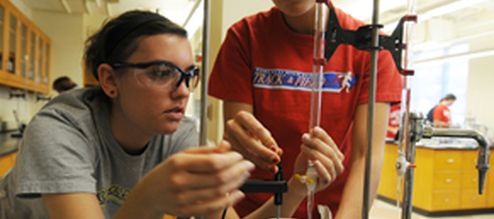Human Exposure to Selamectin from Dogs Treated with Revolution™: Methodological Consideration for Selamectin Isolation
Document Type
Article
Publication Date
2005
Publication Source
Toxicology Mechanisms and Methods
Abstract
This study was undertaken to determine selamectin residue in dog's blood and in gloves worn while petting dogs after Revolution™ application. Revolution™ contains the active ingredient selamectin (a semisynthetic avermectin), which controls endoparasites and ectoparasites, including adult fleas, flea eggs, ticks, heartworms, ear mites, and sarcoptic mange in dogs, for 30 days. Revolution™ was applied topically on a group of six adult house hold dogs (240 mg selamectin/dog). The gloves worn for 5 min while petting the dogs were collected in glass jars and the blood samples (5 mL/dog) were collected in EDTA tubes at 0 h, 24 h, and 72 h, and at 1, 2, 3, 4, and 5 weeks post-Revolution™ application for selamectin residue determination. At no time during the study did the dogs show any signs of toxicity, weight loss, or change in body temperature. Extracts of the blood and the gloves were analyzed for selamectin residue using RP-HPLC coupled with a UV detector (246 nm). Selamectin standard used for peak identification and quantitation was purified from Revolution™. Selamectin residue was detected in the blood (10.26 ± 1.06 ng/mL) only at 72 h post-Revolution™ application, probably due to its poor dermal absorption and rapid elimination from the circulation. In the glove extracts, the highest concentration of selamectin (518.90 ± 66.80 ppm) was detected 24 h after Revolution™ application. Transferable residue of selamectin in gloves from dog's coat was detected at a lesser magnitude after 1 week of Revolution™ application, and that was followed by a further descending trend during the second, third, and fourth weeks. No selamectin residue was detected in the glove extracts after the fifth week. In spite of selamectin's binding to the sebaceous glands of the skin, gloves contained significant transferable residue. Thus, these findings suggest that repeated exposure to selamectin can pose potential health risks, especially to veterinarians, veterinary technologists, dog trainers/handlers, and pet owners.
Inclusive pages
317-321
ISBN/ISSN
1537-6516
Copyright
Copyright © 2005, Taylor & Francis
Publisher
Taylor & Francis
Volume
15
Peer Reviewed
yes
Issue
4
eCommons Citation
Gupta, R. C.; Masthay, Mark; Canerdy, T. D.; Acosta, T. M.; Provost, R. J.; Britton, D. M.; Atieh, B. H.; and Keller, R. J., "Human Exposure to Selamectin from Dogs Treated with Revolution™: Methodological Consideration for Selamectin Isolation" (2005). Chemistry Faculty Publications. 84.
https://ecommons.udayton.edu/chm_fac_pub/84




Comments
Permission documentation on file.